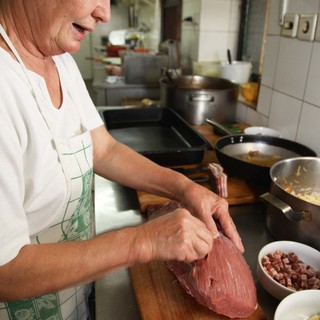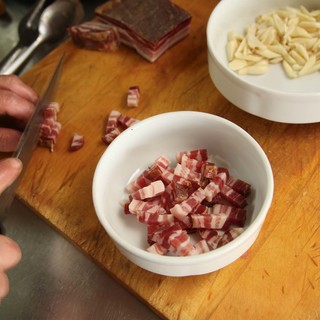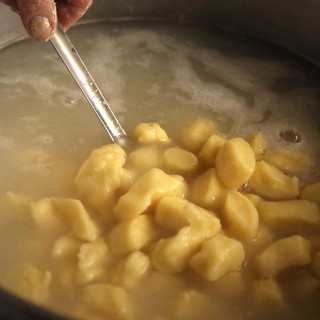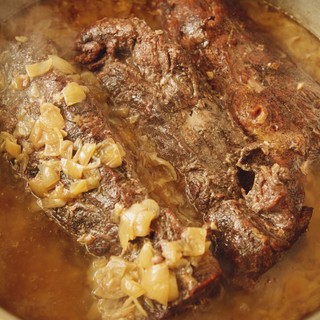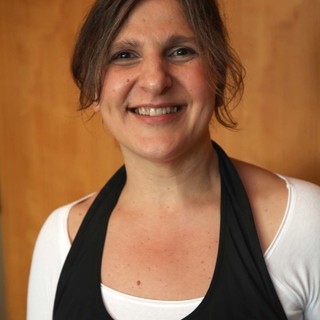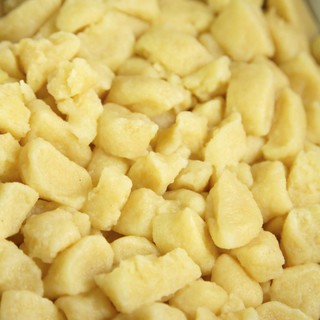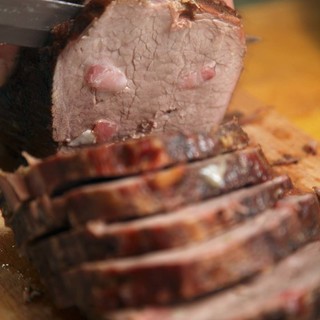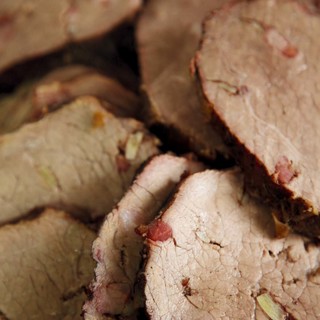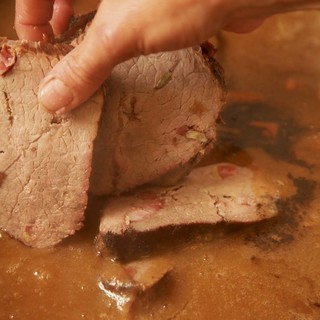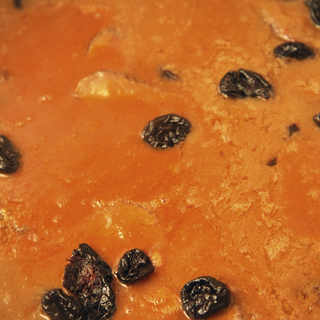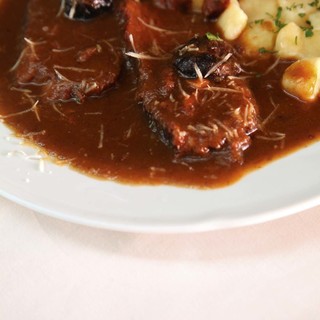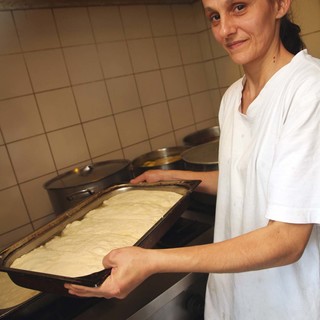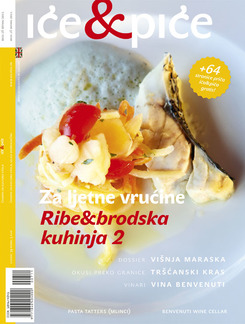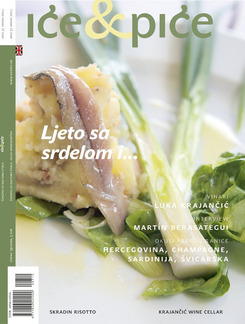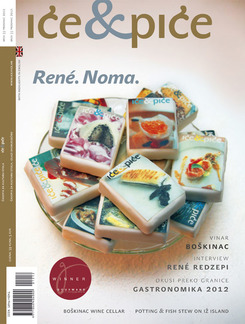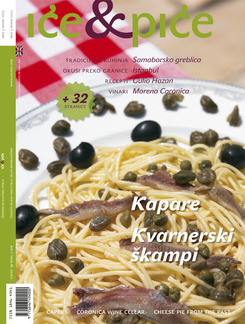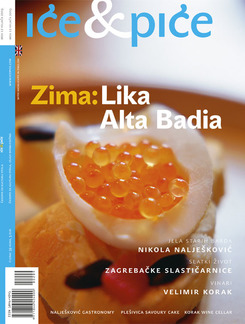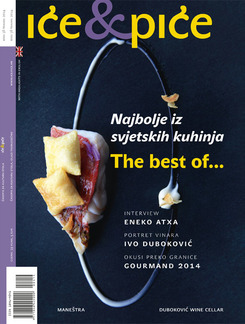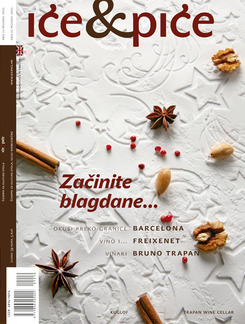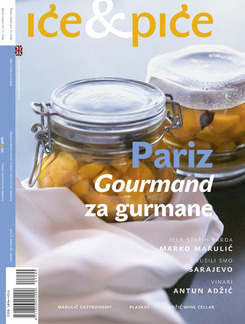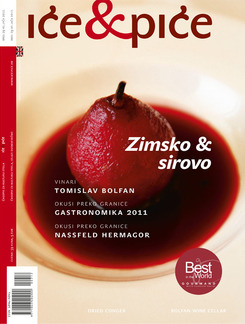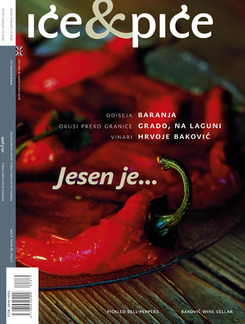Nona Lida didn’t believe in giving out recipes. She thought that dishes had to be discovered, worked on and practised to perfection. Every separate dish then had its own secret ingredient that you had to keep mum about, an ingredient that varies in the countless versions of all traditional dishes. Often this was just a nuance that differentiated ordinary fare and unforgettable meals. For when you have some special dish, something traditional and much-loved, that you do better than anyone else, you’re as proud of it as of a work of art. Everything else is just a copy, and not quite the thing. So Nona Lida thought, anyway. Among her prize recipes was one for pašticada. This is a dish that was featured in the celebration of every event important for a family or in the year, offered to well-beloved guests who were supposed to go away with full stomachs and smiling faces. Then to talk about the good dinner, and to hope to be invited again to Lida’s pašticada. She was celebrated for it, and that is why she never, however much you begged her, ever gave quite the right recipe.
She probably learned how to cook as a little one, helping in the kitchen, like most of the women born n the 1920s. She was born and bred in Lucca, in picturesque Tuscany, and then brought Nono Marko, a man from Brač, who in the helter-skelter of the war years was a PoW and then a forced agricultural labourer on a nearby farm, a number of Tuscan recipes by way of dowry. They spent the post-war years in Italy, and then in the optimistic fifties moved to Split, where Lida created her own family recipe-repertoire. This was a happy combination of two regional Mediterranean cuisines, the Tuscan and the Dalmatian.
The old recipes she brought with her merged with the new that she alternated, like everyone, in the new home. Nona’s Tuscan dishes smelt familiar, and yet different, and the philosophy of using few ingredients could clearly be sensed, needing to be turned by art into something above and beyond the ingredients. Although she certainly brought her kitchen habits and beliefs with her, she practised her style in a Dalmatian kitchen. She cooked with the classic repertoire of Dalmatia: a lot of fish, boiled vegetables, ragu as often as possible and of course home-made pasta. But she had her Tuscan aces, like lasagna verde, dolce garbo liver and rice-beignets.
Nona also inherited the common Mediterranean art of cooking beef in dark gravies, sweetish, with almost Baroque flavours of cloves, cinnamon, wine and fruit. A balance of the flavour of the meat, the tanginess of the wine and the sweetness of dried plums or figs, cinnamon or clove. Historians of food in these gastronomically fortunate spaces find the sources of food like this in the cuisine of Byzantium, which was created out of the culture of antiquity and was located along the spice and savour routes from the East. The cuisine of Veneto boasts similar dishes, although some think that pastissada was at first cooked in Verona, of horse-meat, indeed, and in some versions (particularly that called spezzatino) of donkey flesh. A speciality of the island of Corfu, the famed pastitsada, owes nothing of its sweetness to dried fruit but to cloves and cinnamon, which is almost always to be found in recipes throughout the Mediterranean. Any discussion about a proper recipe for any of these dishes would be pointless, since it really always bears the strong personal stamp of the cook. Variants of the dish often do not even agree about which meat to choose, beef or baby beef, and in the surrounds of Omiš there are some who swear blind that the only true meat is ass. Some put in root vegetables, some lard it with pancetta or cloves, some think it’s a sin to put in tomato paste and that without dessert wine pašticada cannot be any good. Whatever: pašticada is the top place of Dalmatian cuisine and so a site of eternal dissensions.
The reputation of good cook is made or broken on the great exam of Dalmatian cookery, pašticada, where everyone’s mum or gran has the best recipe. Good and bad are both remembered, but only the good is told over and again. And so, why indeed give out recipes for a meal that will enable you to wipe the floor with the opposition? Lida’s pašticadas have stood the test of time and have remained a memorial to the everyday work of women. She handed it down, perhaps not easily, so her grandson should be able to eat Nona’s pašticada when Nona was no longer around. According to the family telling, she cooked pašticada that took your breath away, and was certainly her grandson’s favourite food. She cooked it on festive occasions, to general delight, she was proud and prodigal in her execution. This pašticada would be talked of days later, it was imagined and expected again on the first possible occasion. Christmas or birthday, cooking from love or according to special wishes… and this marvellous recipe was never given to her daughter-in-law, but only to her sister, whose cooking she appreciated. This recipe really needed to be earned.
Love at first bite
The first pašticada I ever tried was love at first bite, and nothing after it ever outdid it. That is, none other was prepared according to the recipe of Nona Lida, which I had the good luck to try in the Slavonian-Mediterranean house at a friend’s name-day. There it smouldered, all dark in a big pot. Gnocchi with thick, sweetish gravy in which the slices of beef just melted. Prunes and cloves. I can still remember the savour of the third help, just a bit more. A bit more… My friend’s mum, gladdened by my childish delight in eating (all people who cook love those who want more), gave me the recipe. Not nona’s, but her own, to which she added a spoonful of Seville orange marmalade, which did wonders. After a heated family discussion before one long ago Christmas, I took this pašticada onto the festive board, and my gran turned up her nose at the mention of Dalmatian cookery. But she had seconds. And so pašticada went onto the menu of my unfortunately irredeemably inland family.
And so, because the whole of Nona Lida’s family would be up in arms, I promised not to give out her recipe. You will simply have to be their guest and try to copz Lida’s pašticada yourself.
